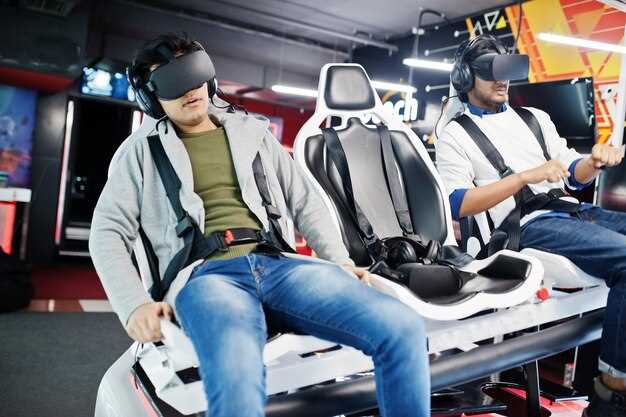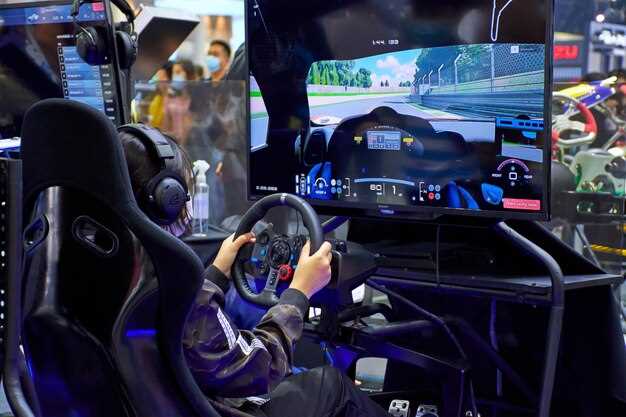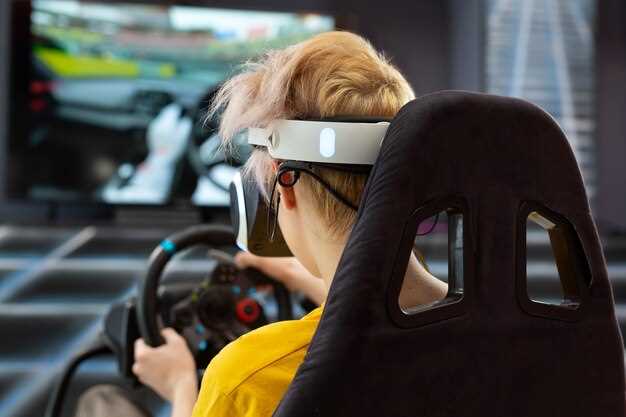
In the world of motorsport, the line between simulation and reality is becoming increasingly blurred. As technology advances, sim racing has emerged not only as a popular pastime but also as a legitimate training tool for aspiring and professional drivers alike. By engaging in sim racing, drivers can refine their skills and strategies, ultimately enhancing their performance on the track.
One of the key benefits of sim racing is its ability to provide a safe and controlled environment for training. Drivers can experiment with different racing lines, braking techniques, and car setups without the risks associated with real-life racing. This allows them to gather valuable data and insights that can be translated directly to their real-world racing experiences.
Furthermore, sim racing offers the opportunity to practice under various conditions, whether it’s changing weather, track surfaces, or tire wear. By consistently honing their skills in these simulated environments, drivers can build muscle memory and develop a deeper understanding of vehicle dynamics, which are crucial for success in racing.
In this article, we will explore specific sim racing techniques that can directly enhance your real racing skills, emphasizing the importance of immersive practice and strategic thinking. Embrace the fusion of simulation and reality, and unlock your full potential as a driver.
Understanding Force Feedback Settings for Better Control

Force feedback is a critical component in sim racing that can significantly influence a driver’s ability to react and perform on track. Proper calibration of these settings can enhance the training experience, allowing for better transition to real-life racing scenarios.
Force Feedback Strength is one of the primary settings to adjust. It determines how much resistance the wheel provides during driving. A setting that is too low may result in a lack of sensation, making it difficult to gauge limit behavior. Conversely, a setting that is too high can lead to fatigue and hinder precise control. Finding a balance that feels natural is essential for developing skills that translate to physical racing.
Effects Settings adjust how the forces feel during different driving conditions. For instance, when driving over curbs or during tire slip, these effects inform the driver about grip levels. Tuning these effects enhances the training environment, as a well-calibrated system offers more realistic feedback akin to actual racing situations. This allows the driver to learn and adapt their techniques effectively.
Another important feature is Distance Scaling. This setting changes how feedback strength varies with distance from the center of the wheel. A well-calibrated distance scaling helps drivers better understand the dynamics of their vehicle, particularly during high-speed maneuvers. It encourages a more intuitive grasp of how inputs affect car behavior.
Lastly, Vibration Settings provide additional feedback through texture and surface irregularities. Adjusting these can create a more immersive experience, allowing the driver to feel the nuances of different tracks. Mastering these vibrations can assist in developing reflexes that are crucial in real racing. By attentively configuring force feedback settings, sim racers can refine their control, ultimately enhancing their performance in real-world racing contexts.
Mastering the Racing Line through Virtual Practice
Understanding and mastering the racing line is a crucial skill for both virtual and real-world racing. Virtual practice offers a unique environment where drivers can refine their technique, improve their consistency, and develop a deeper understanding of the racing line.
The racing line refers to the optimal path taken around a track, allowing drivers to maintain speed while minimizing tire wear and maximizing control. In sim racing, this concept becomes even more tangible through the use of adjustable settings and real-time feedback. Here are some techniques to enhance your racing line skills through virtual training:
- Study Track Maps: Familiarize yourself with the layout of each track. Analyze track maps and identify key corners, straights, and elevation changes.
- Use Telemetry Tools: Leverage telemetry data to understand your lap times and compare them with faster drivers. Look for areas where you can gain time and optimize your line.
- Focus on Apexes: Concentrate on hitting the apex of every corner. Use virtual practice to experiment with different approaches to see how they affect your lap times.
- Vary Your Speed: Practice entering and exiting corners at different speeds. Find the balance between carrying speed and maintaining control, and discover how it affects your overall lap performance.
- Incorporate Brake Points: Establish consistent brake points throughout your virtual training sessions. Understanding where to brake effectively will help you stay on the racing line during real-world situations.
- Utilize Ghost Cars: Race against ghost cars to visually see the racing line. This can help you identify mistakes in your technique and improve your timing.
By utilizing these techniques, drivers can enhance their understanding of the racing line, which will translate seamlessly into real-world racing scenarios. The skills developed in sim racing can lead to improved performance on track, making virtual practice an invaluable training tool.
Utilizing Telemetry Data to Analyze Performance
Telemetry data plays a crucial role in both sim racing and real-world racing, offering valuable insights into a driver’s performance and the vehicle’s behavior on the track. By analyzing this data, drivers can identify areas for improvement, fine-tune their techniques, and ultimately enhance their racing skills.
One of the primary components of telemetry data is the collection of metrics such as speed, throttle position, steering angle, and braking force. These metrics provide a comprehensive view of how a driver interacts with the car during a race. By reviewing this data, drivers can pinpoint specific sections of the track where they may be losing time, allowing for targeted training efforts.
For instance, analyzing braking distances and throttle application can reveal whether a driver is maximizing the car’s potential. If telemetry indicates that a driver is braking too late or not applying the throttle early enough, they can focus their training on adjusting these behaviors to achieve better lap times.
In addition to individual performance metrics, comparing telemetry data with other drivers can provide a competitive edge. By examining the data of experienced racers, less experienced drivers can learn effective techniques and strategies that can be adapted to their own driving style. This benchmarking process is essential for understanding the differences in approach and execution on the track.
Furthermore, telemetry data can help simulate various racing conditions and vehicle setups. Through data analysis, drivers can experiment with adjustment parameters in a safe environment, allowing them to gauge the effects of different strategies without the risks associated with real-world racing. This trial-and-error approach enhances the understanding of vehicle dynamics and improves the decision-making skills necessary for real racing.
In summary, utilizing telemetry data effectively leads to a deeper understanding of racing performance. By critically analyzing this data, drivers can refine their techniques, enhance their training, and ultimately foster improvements in both sim racing and real racing environments.
Improving Reaction Times with Simulation Tools

In the realm of motorsports, quick reflexes can make a significant difference in performance. Sim racing offers innovative training methods that can enhance these crucial reaction times. Utilizing specialized simulation tools, drivers can practice in a controlled environment, which allows them to refine their skills without the risks associated with real-world racing.
One of the main advantages of simulation is the ability to replicate various racing conditions. By adjusting settings such as weather, track surfaces, and vehicle dynamics, drivers can experience diverse scenarios that test and develop their reaction times. Regular immersion in these simulated environments helps condition the brain to process information faster and make split-second decisions.
Several simulation platforms feature reaction time tests and drills, specifically designed to hone this skill. These exercises mimic real-life racing situations where rapid responses are required. Below is a table outlining some popular simulation tools and their functions related to improving reaction times:
| Simulation Tool | Function | Benefits for Reaction Times |
|---|---|---|
| iRacing | Realistic racing environment with variable conditions | Enhances adaptability to changing circumstances |
| Assetto Corsa | Customizable setups for vehicles | Improves understanding of car behavior, leading to quicker reactions |
| rFactor 2 | Dynamic weather and terrain simulation | Builds reflexes through unpredictable scenarios |
| SimRaceway | Reaction time drills | Directly targets and develops reflexes through practice |
Consistent training with these simulation tools allows drivers to measure their progress and adapt their approaches based on performance feedback. By analyzing lap times and reaction statistics within the simulator, drivers can identify areas for improvement. Such targeted practice is invaluable for those seeking to enhance their skills for real-world racing.
Ultimately, leveraging simulation tools effectively in training routines can lead to marked improvements in reaction times. By simulating the pressures of actual racing conditions, drivers can prepare themselves to respond faster while enhancing their overall racing capabilities.
Adapting Driving Techniques from Sim to Real-World
Sim racing has become an invaluable training tool for aspiring drivers, offering a platform to hone skills that are directly transferable to real-world racing. One of the critical aspects of this adaptation lies in understanding traction management. In simulations, drivers learn to feel the limits of grip through feedback from the virtual environment, enabling them to make finer adjustments during real racing.
Braking techniques developed in sim racing can also enhance real-world performance. Practicing threshold braking in a simulated context helps drivers master the art of slowing down efficiently without losing control. Knowing when to downshift and how to modulate brake pressure are skills that can be reinforced through repetitive training in simulations.
Furthermore, sim racing environments allow drivers to experiment with various racing lines and cornering strategies without the risks associated with physical racing. This trial-and-error approach facilitates a deeper understanding of which techniques yield optimal lap times. By analyzing data from sim training sessions, drivers can identify their strengths and weaknesses, making it easier to focus on areas needing improvement before stepping onto a real track.
Another crucial element is the development of situational awareness. Sim racing exposes drivers to diverse scenarios, including multiple competitors and changing conditions. This experience translates well to real-world racing, where quick decision-making and awareness of surroundings are essential. Drivers learn to anticipate opponents’ maneuvers and strategize their own actions based on simulated interactions.
Finally, the familiarity with various vehicle dynamics obtained in sim racing can significantly ease the transition to real cars. Drivers can practice settings like tire management, fuel consumption, and vehicle balance adjustments in a virtual setting, allowing them to refine their skills for actual racing situations.
In summary, the techniques learned in sim training–ranging from grip management to situational awareness–create a solid foundation that enhances real-world racing capabilities. Embracing both mediums, drivers can ensure they remain competitive and continue to grow in their racing careers.
Creating a Focused Mental Game in Sim Racing
In the world of sim racing, mental fortitude plays a crucial role in achieving peak performance. To enhance your real-world racing skills, it’s essential to develop a focused mental game within the virtual environment. This involves cultivating concentration, visualization, and mental resilience, which can significantly translate to physical racing experiences.
Firstly, establishing a distraction-free environment for sim racing is vital. Ensure your gaming setup is free from interruptions, allowing you to concentrate fully on your performance. This can include turning off notifications and creating a dedicated space that mimics a professional racing setup. A focused environment can help you channel your energy into understanding the nuances of car control and race strategy.
Visualization techniques have a powerful impact on racing performance. Spend time outside the cockpit mentally rehearsing race scenarios. Picture yourself navigating through corners, managing braking points, and executing overtakes. Imagining these scenarios helps solidify muscle memory, making it easier to execute them when you’re behind the wheel, whether in a sim or a real car.
Moreover, practicing mindfulness can enhance your ability to remain calm under pressure. Techniques such as deep breathing and meditation can help you maintain focus during intense moments in races. When faced with challenges, such as recovering from a mistake or dealing with aggressive competitors, having a calm mind allows you to think clearly and make better decisions.
Setting specific goals during your sim racing sessions is another effective strategy. Aim for incremental improvements in lap times, consistency, or racecraft. By breaking down your objectives into manageable tasks, you create a sense of purpose and direction in your practice sessions. This focused approach fosters a growth mindset, helping you to continuously enhance both your sim and real-world racing skills.
Finally, reflecting on your performances in both sim racing and real-life events is essential. After each session, take time to analyze what went well and where you can improve. This reflective practice builds self-awareness and allows you to adjust your mental approach, reinforcing a cycle of learning and adaptation that is pivotal for success in the competitive racing landscape.




